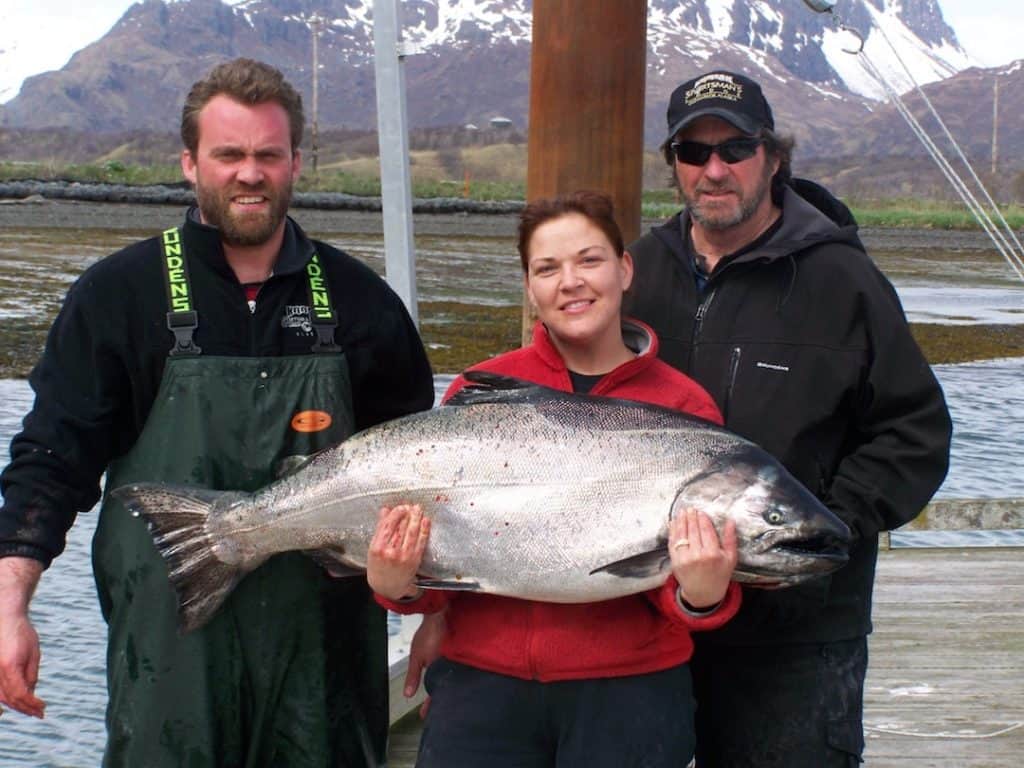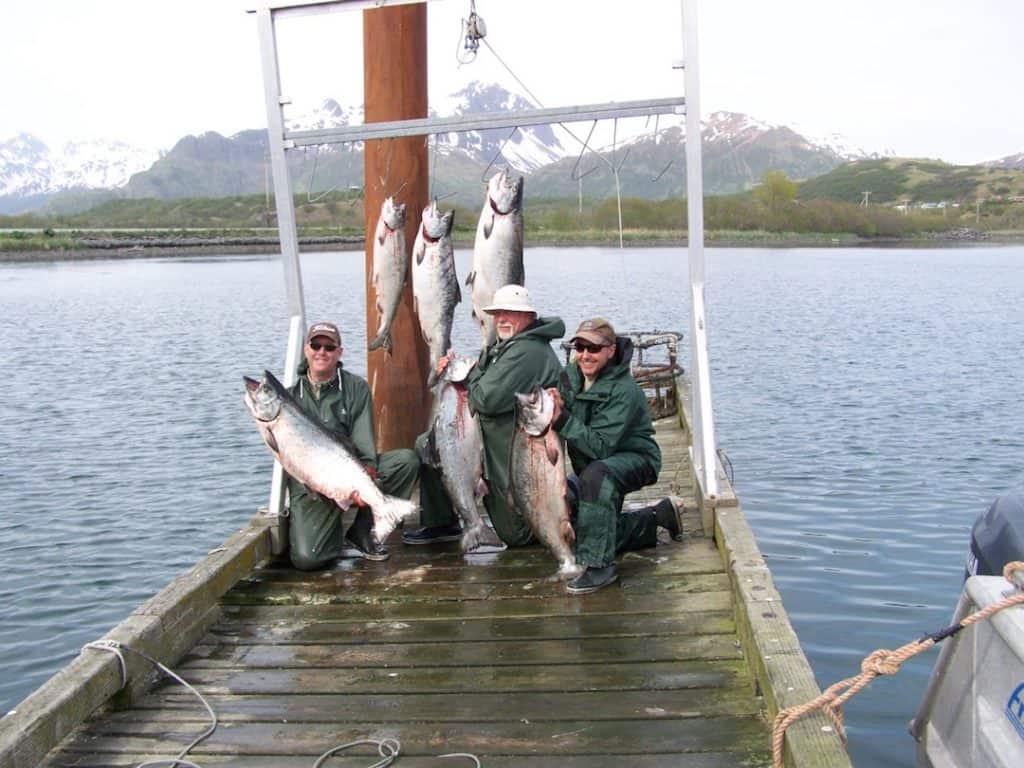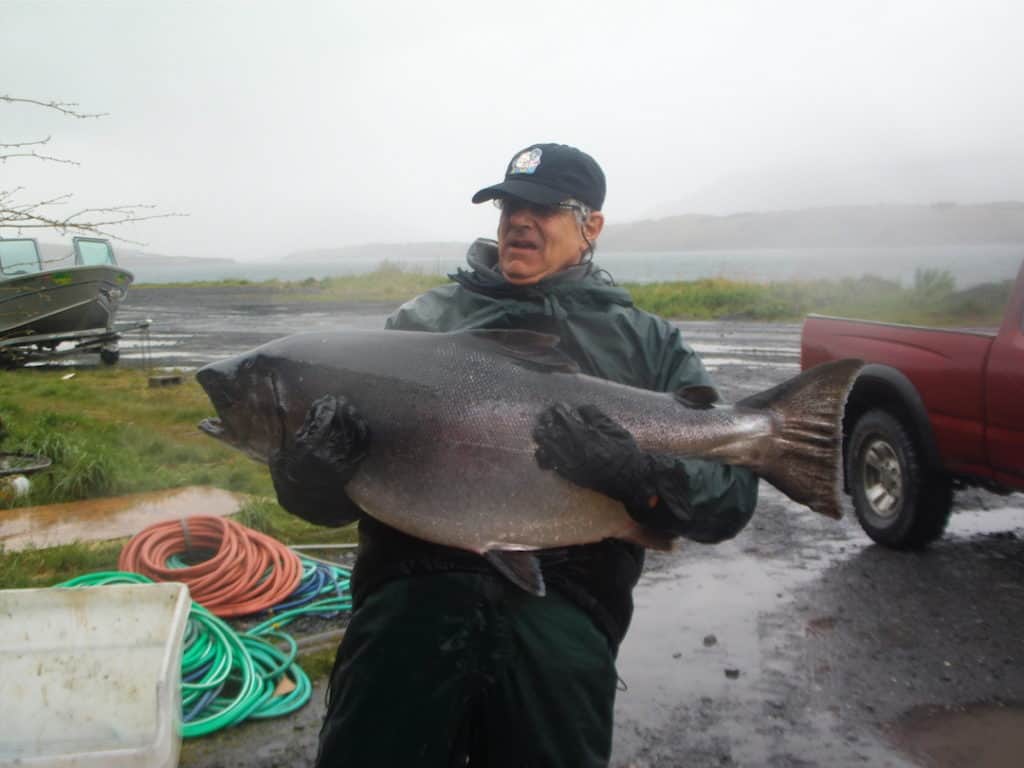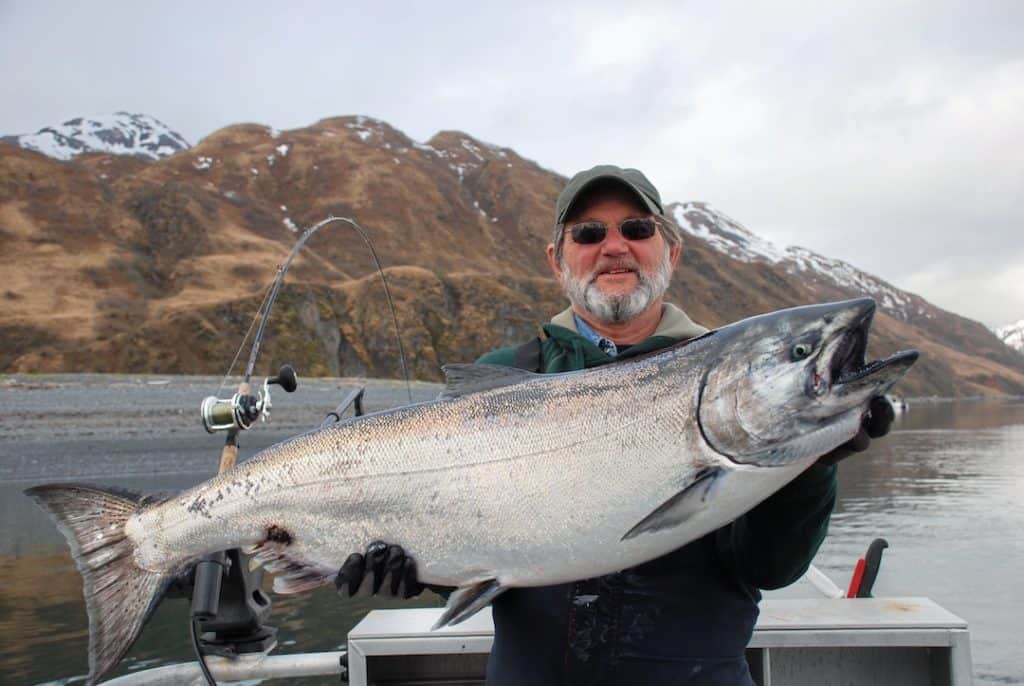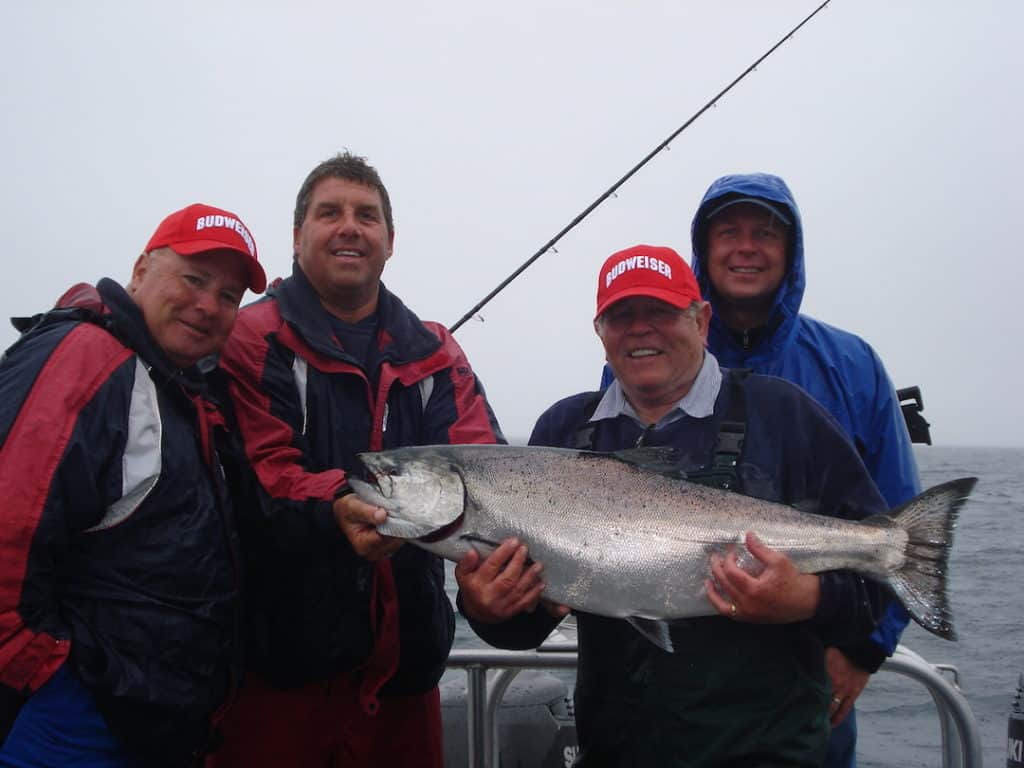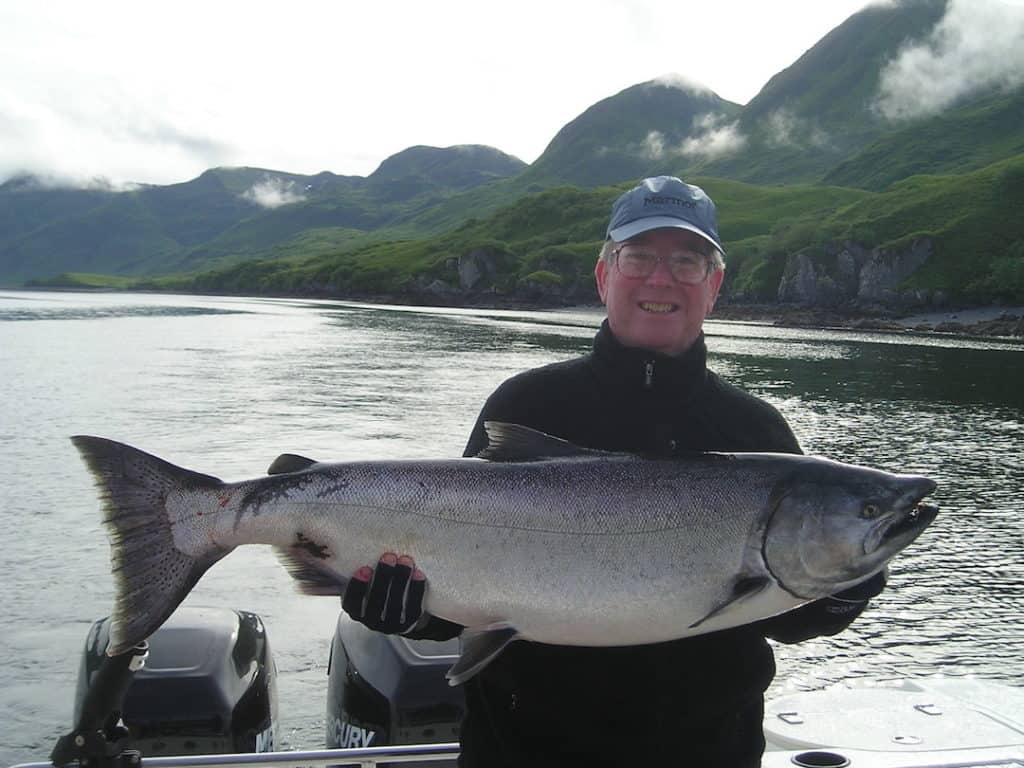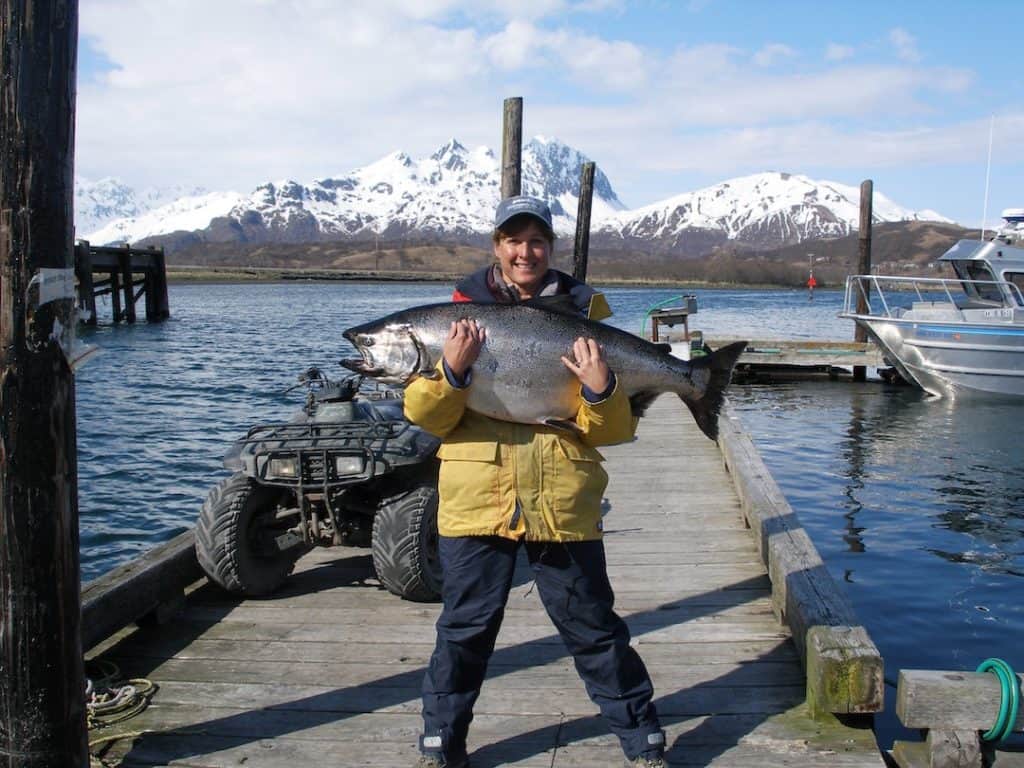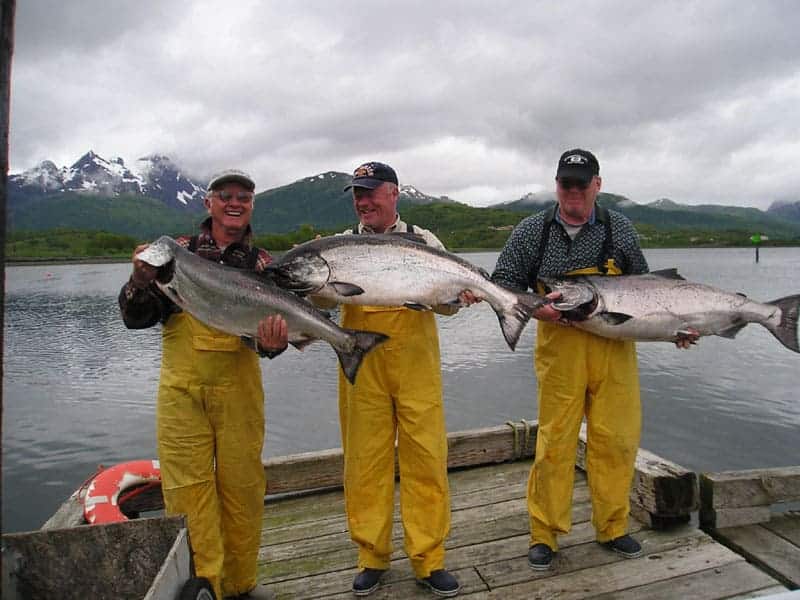Kodiak Salmon Species
When fishing in Alaska at Kodiak Sportsman’s Lodge, it is important to know the different Kodiak Salmon species. Timing is everything when it comes to an Alaska fishing vacation. On Kodiak Island, you need to decide what your favorite fish is and plan your trip during the best time to catch them. Fish size, taste, and the type of fishing you want are important. Salmon and halibut are the most popular fish but other Alaska fish species are fun to catch and many people believe taste better. Many people say halibut is their favorite Alaska fish species and my family said that as well before our first Alaska trip. Alaska rockfish species and their mild and most flavor have become our family’s favorite fish over time. Your fishing vacation to Kodiak Sportsman’s Lodge for your favorite fish starts with finding the best time to catch them.
Kings – The Largest Kodiak Salmon Species
The king salmon is the largest of Kodiak Salmon species. May and June is the best time to catch kings but there are always some in the waters near Old Harbor. King salmon is the Alaska fish species we filet into steaks. The meat is dense and oily which makes it great to smoke at home as the oil keeps it moist and tasty. At Kodiak Sportsman’s Lodge king salmon are in the area from April – October. The feeder kings, which are also called Trophy Kings are the top Alaska fish species on many anglers’ bucket lists. Trophy kings migrate into the area the beginning of May which is why the lodge is now open in early May. This is your best chance to catch a 40 lb+ king salmon. They stay in the area through the beginning of June. After that there may still be a few in the area but typically you will start catching kings in the twenty-five-pound range. With this Kodiak Salmon species, one thing is for sure, you know when a king hits your line as the reel makes that sound that gets us all excited – whirring as fast as it can go!
Silver salmon are an aggressive Kodiak Salmon species that migrate in large numbers through the Sitkalitak Straits and Old Harbor in August and September. Silvers are a popular Alaska fish species as limits are higher and the migration to the spawning grounds more certain. Silver salmon is also excellent to grill or smoke. The fish has less oil than king salmon and a more delicate taste. We grill it on cedar planks soaked in water and use various flavorings to enhance its taste. In Kodiak Island waters, both salmon Alaska fish species are caught trolling using down riggers and artificial lures.
We fish in the protected waters of the Sitkalitak Straits and Kodiak Island. This is comfortable fishing as we aren’t affected by large tidal swings and never need to fish in open seas. All of the Alaska fish species are close to the Lodge. This is a great benefit to those who have tendencies to sea sickness as the waters are much calmer. We start fishing as close as 15 minutes from the harbor.
Kodiak Alaskan Halibut
The Alaska halibut is the largest bottom flatfish and can weigh several hundred pounds. This Alaska fish species is a Kodiak Sportsman’s Lodge favorite and lives near rock piles and on ledges in the Sitkalitak Straits. During the winter, halibut travel out to the deep ocean to spawn from local waters where they live and feed. They return to shallow waters in the spring and summer. The halibut’s olive color helps it hide on the ocean floor.
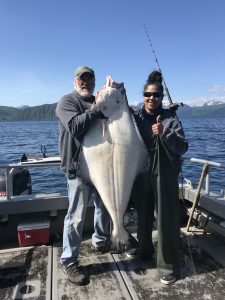
At Kodiak Sportsman’s Lodge, anglers fish for halibut from May through November. Halibut live on rock piles or near ledges where they feed. Using bait cast tackle, herring or jigs are dropped to the bottom to attract the fish. You reel up all Alaska fish species that feed on the bottom by winding as you bring the rod down and then pulling up and winding down again in a steady motion with constant pressure on the line. “Get your tip up” is the key to constant pressure. Everyone has their favorite halibut fishing hole.
Halibut is a favorite menu entrée with delicate meat and soft taste. I also like smoked halibut and many ethnic dishes can be prepared with halibut.
Halibut seems to be the favorite Alaska fish species and that is the case with our family. Every year there are great fishing stories made from the different halibut fishing experiences our guests enjoy. The first year the Montgomery family joined us they hit a new spot that was swarming with activity. As soon as lines were dropped you would hear “fish on” and soon there was another halibut (butt) on deck. There, every bottom Alaska fish species feeding in that spot so the guide brought us over and said, “Look in here.” He was holding a black sea bass. He started pulling food out of its mouth, it was full of shrimp! After that day of exciting fishing, the hole was dubbed “The MBBH” – the Montgomery Big Butt Hole.
A New Favorite Kodiak Alaska Fish Species—The Rockfish and Lingcod
The lingcod is a bottom-dwelling fish that stays in a local area. Limits are very low and populations have a difficult time rebuilding if too many fish are caught. Lingcod live in rock crevices or on ledges but it is not a rockfish. Lingcod are one Alaska fish species that do not migrate and stays in localized areas. Lingcod are in season starting in July in most areas through the end of the fishing season. Lingcod and halibut are similar Alaska fish species and you fish for them in the same way. You may experience a “ride along” where a lingcod will grab a fish on another line and follow it to the top.
This happened to Lisa catching a forty-five-pound lingcod. As she was reeling Captain Conrad Peterson shouted: “stop reeling!” She held the line tight as he gaffed the fish. After pulling it on deck we looked at the small halibut on her hook that the lingcod had grabbed a bite of and was pulled to the surface.
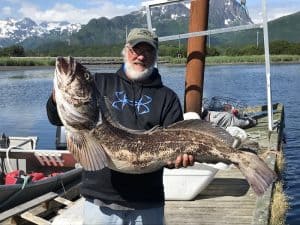
Yelloweye are one of the largest Alaska fish species of rockfish near Kodiak Island growing more than twenty-five pounds. Limits are low for these fish that can live over one hundred years and you often catch yelloweye while you are fishing for halibut. Like lingcod, yelloweye do not migrate and live in a local area year round.
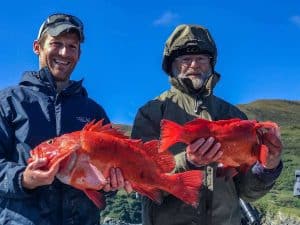
The black bass is one of the more abundant Alaska fish species in Kodiak Island waters. The black bass is known by many names including the black rockfish and they can live more than fifty. Black bass can live up to fifty years and can grow to eleven pounds and over two feet in length. They are aggressive and will hit lures quickly. Black bass are an Alaska fish species that reproduce quickly compared to lingcod and other rockfish. Black bass have a mild flavor and are a popular menu item in our home.
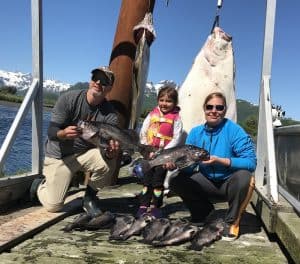
Kodiak Alaska Fish Species That Kodiak Brown Bears LOVE
Last year our guest Mr. Steen was fishing in August for silver salmon. Our guide spotted a bear at the shore splashing around. As they quietly brought the boat closer, the guests were able to watch and photograph a huge Kodiak Brown Bear catching and feasting on the salmon. They had the National Geographic experience of bear watching!
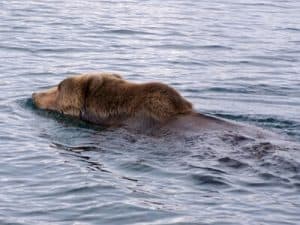
Other Information
- Find more information and facts about preserving king salmon at www.adfg.alaska.gov/index.cfm?adfg=chinookinitiative.main
- Visit the Official Alaska website for more information http://alaska.gov/visitorHome.html


